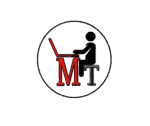-
Course Overview 0
No items in this section -
Index 32
-
Introduction of Data Structure 08 minLecture2.1
-
Types Of Data Structures 06 minLecture2.2
-
Operations Of Data Structures 06 minLecture2.3
-
Concept Of Abstract Data Type 06 minLecture2.4
-
Array Part #1 16 minLecture2.5
-
Array Part #2 19 minLecture2.6
-
Introduction To Stack 05 minLecture2.7
-
Operations Of Stack ADT 06 minLecture2.8
-
Stack Implementation Using Array Part #1 10 minLecture2.9
-
Stack Implementation Using Array Part #2 12 minLecture2.10
-
Introduction Of Queue 05 minLecture2.11
-
Operations Of Queue ADT 04 minLecture2.12
-
Queue Implementation Using Array Part #1 11 minLecture2.13
-
Queue Implementation Using Array Part #2 09 minLecture2.14
-
Circular Queue Implementation Part #1 12 minLecture2.15
-
Circular Queue Implementation Part #2 08 minLecture2.16
-
Introduction To Linked Lists 06 minLecture2.17
-
Array Vs Linked List 08 minLecture2.18
-
Linked List Implementation Part #1 17 minLecture2.19
-
Linked List Implementation Part #2 11 minLecture2.20
-
Linked List Part #3 10 minLecture2.21
-
Linked List Part #4 15 minLecture2.22
-
Linked List Implementation Part #5 11 minLecture2.23
-
Linked List Implementation Part #6 10 minLecture2.24
-
Stack Using Linked List Part #1 09 minLecture2.25
-
Stack Using Linked List Part #2 06 minLecture2.26
-
Queue Using Linked List Part #1 10 minLecture2.27
-
Queue Using Linked List Part #2 06 minLecture2.28
-
Circular Queue Using Linked List 09 minLecture2.29
-
Implementation Of Doubly Linked List Part #1 13 minLecture2.30
-
Doubly Linked List Part #2 07 minLecture2.31
-
Doubly Linked List Part #3 09 minLecture2.32
-
-
Notes 7
-
Introduction to Data Structures & Algorithms.Lecture3.1
-
Sorting & SearchingLecture3.2
-
StacksLecture3.3
-
QueueLecture3.4
-
Linked ListLecture3.5
-
TreesLecture3.6
-
GraphLecture3.7
-
-
Data Structures Viva Question 6
-
Introduction to Data StructuresLecture4.1
-
Stack and QueuesLecture4.2
-
Linked ListLecture4.3
-
TreesLecture4.4
-
GraphsLecture4.5
-
Searching TechniquesLecture4.6
-
-
Importance 7
-
Introduction to Data StructuresLecture5.1
-
Stack and QueuesLecture5.2
-
Linked ListLecture5.3
-
TreesLecture5.4
-
GraphsLecture5.5
-
Searching TechniquesLecture5.6
-
[Extra] Previously Asked Important QuestionsLecture5.7
-
Introduction To Stack
Introduction To Stack
A stack is an abstract data type that holds an ordered, linear sequence of items. In contrast to a queue, a stack is a last-in, first-out (LIFO) structure. A real-life example is a stack of plates: you can only take a plate from the top of the stack, and you can only add a plate to the top of the stack. A stack is an Abstract Data Type (ADT), commonly used in most programming languages. It is named stack as it behaves like a real-world stack, for example – a deck of cards or a pile of plates, etc. For example, we can place or remove a card or plate from the top of the stack only.
Prepare For Your Placements: https://lastmomenttuitions.com/courses/placement-preparation/
![]()
/ Youtube Channel: https://www.youtube.com/channel/UCGFNZxMqKLsqWERX_N2f08Q
Follow For Latest Updates, Study Tips & More Content!
Prev
Array Part #2


